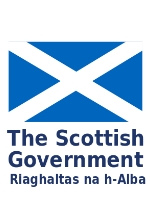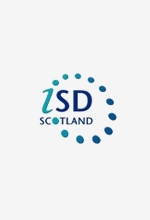
This release from the Information Services Division, published on behalf of the Scottish Dental Practice Board (SDPB), provides an annual update on how primary care dental services are managed and provided in Scotland, how well these services are operating,
and financial payments made to dentists.
Compared to financial year 2014-2015:
- In 2015/16, the total cost of General Dental Services and Public Dental Services in Scotland increased by 1.8% to £402.1m.
- Total payments made to dentists increased by 3.0% to £349.5m.
- Costs of dental registration fees for both children and adults increased by 2.1% and 4.3% respectively. This is due to fee increases and to higher numbers of patients registered.
- The total cost of treatment fees increased by 1.0% to £125.8m. However, this is due to a feescale increase of 1.6%; numbers of treatments provided continue to decrease year on year.
- Due to changes in superannuation contribution rated for NHS employers there was a further increase in costs to NHS Boards.
Download the Summary or Full Report.
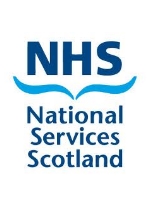
The data shows that while oral health in P1 pupils is continuing to improve, the rate of improvement is slowing. The proportion of P1 children with no obvious decay now stands at 69% overall, with the average number of decayed missing and filled teeth (dmft) now standing at 1.21.
Across Scotland, socio-economic inequalities in the oral health of P1 children remain, with percentages with no obvious decay experience ranging from 55% for children in the most deprived quintile, (SIMD 1) to 82% for those in least deprived quintile, (SIMD 5).
Further details are available in the summary and full reports.
Downloads
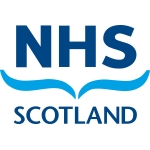
This report the first in a new format providing an increased and more clearly structured set of information on how primary care dental services are managed and provided in Scotland, and how well these services are operating.
It includes all the information previously provided in annual reports published by the Scottish Dental Practice Board (SDPB), but organises that data into sections more clearly aligned with the roles and responsibilities of the SDPB, Practitioner Services and NHS Boards.
The report is published by Information Services Division and NSS Practitioners Services on behalf of the Scottish Dental Practice Board.
Download a copy of the report
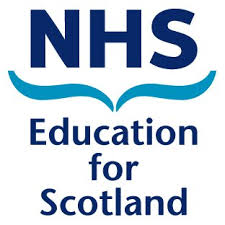
This report is the latest in a series of biennial dental workforce reports that aim to inform workforce planning for dental services in Scotland.
The report is available in full text HTML from NHS Education Scotland. It contains the following sections:
The projected changes in the size and composition of the population are forecast to increase the demand for dental services during the forecast period.
Based on the current number of registered patients per dentist the forecast increase in the demand for dental services increases the demand for dentists.
Based on a series of estimates and assumptions, the supply of dentists is forecast to exceed the number required to maintain current registration rates.
There is considerable uncertainty over the inflows from other, typically non-UK, sources that have an immediate impact on the number of dentists in Scotland.

This report monitors NHS boards’ progress made towards the targets at both local and national level and covers the last 6 months of the calendar year 2010.
Background
The Action Plan for Improving Oral Health and Modernising NHS Dental Services was published in 2005. It set out the then Scottish Executive’s policy and plans for dentistry and dental public health for the next 3 years. This plan has brought considerable investment to dentistry: an increase in the NHS funding of primary care dental services. This has been continued with the Scottish Government. To ensure this investment is achieving its goals a range of targets has been set around oral health improvement, primary care dental service delivery and quality, and dental workforce and training.
This report monitors NHS boards’ progress made towards the targets at both local and national level and covers the last 6 months of the calendar year 2010. From November 2010, ISD Scotland is publishing these reports as Official Statistics.

Dental statistical publications from the Information Statistics Division of NHS Scotland (ISD), including Registrations, Feeds and Action Plan monitoring reports.
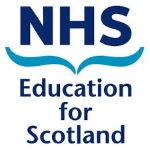
The 2014 Dental Workforce report is the latest a series of reports that provide analysis, intelligence and modelling to support workforce planning for dental services in Scotland.
Download a copy of the report
The latest dental statistical publications from Information Statistics Division of NHS Scotland, including Registrations, Fees and Dental Action Plan monitoring reports. VIsit the ISD dental statistics publications webpage
Reports of the findings of the 2008-2009 out-of-hours emergency dental services peer review visits to NHS boards throughout Scotland undertaken by NHS Quality Improvement Scotland. The peer review was initiated following the publication, in November 2007, of out-of-hours emergency dental care standards by the Scottish Dental Clinical Effectiveness Programme (SDCEP).
Healthcare Improvement Scotland took over the responsibilities of NHS Quality Improvement Scotland on 1st April 2011.
Visit the Health Care Improvement Scotland (HIS) site.
In 2006 the Department of Health reformed the General Dental Service (GDS) in England and Wales. This report looked at whether the criteria for success had been met.
View the report online
This report from the Dental Workforce Project uses the best available data from several sources to examine trends in oral health, the supply of dental services and the use of dental services in Scotland. The Dental Workforce Project is a collaboration between NES and the Information Services Division (ISD) of NSS, which aims to inform workforce planning in dentistry by using robust data to forecast the demand for and supply of dentists. The report builds on previous dental workforce analysis undertaken jointly by NES and NSS and provides an increasingly robust evidence base for future strategic planning.
This report was produced as a joint project between NHS Education for Scotland and NHS National Services Scotland.
The report is intended to provide data and trend analyses to support workforce planning for NHS dental services in Scotland. Since the launch of the Action Plan for Improving Oral Health and Modernising NHS Dental Services (2005) and Better Health, Better Care (2007), there has been significant investment in the dental workforce in Scotland. The report shows clearly that the numbers of trained dental professionals is rising steeply and that this increase will be sustained for the foreseeable future.
Download a copy of the report
This report published in 2001 includes an executive summary and recommendations from a National Dental Information Working Group in information technology in Dentistry.
Download a copy of the report.
The review was established in 2002 by the Chief Dental Officer. It was chaired by Margie Taylor, then Consultant in Dental Public Health with NHS Lanarkshire . The remit of the group was to review the role, remit and structure of primary care salaried dental services and identify an effective and efficient service for the new millennium in Scotland.
Download a copy of the review

The Information Services Division (ISD) is a division of National Services Scotland, part of NHS Scotland. ISD provides health information, health intelligence, statistical services and advice that support the NHS in progressing quality improvement in health and care and facilitates robust planning and decision making.
The Dental section of ISD provides a range of dental service data including. Registration and participation data, Information on fees treatments and the dental workforce
Visit ISD – Dental webpage

Key Points as at 30th September 2013
- As at 30th September 2013, over 4.4 million patients were registered with an NHS GDS dentist in Scotland, an increase of 1.8 million since March 2007.
- The level of the Scottish population registered with an NHS GDS dentist increased from 50.5% in March 2007 to 83.4% in September 2013.
- Within the 6-12 age group, over 99% of the population was registered with an NHS GDS dentist.
- Registration levels for adults aged over 24 decreased incrementally with age, from 93.8% for the 25-34 age group to 66.1% for people aged 75 and over.
- As at 30th September 2013, Shetland and Greater Glasgow & Clyde had the highest percentage of children registered (91.5%) and Ayrshire & Arran the highest percentage of adults registered (86.7%).
- Western Isles had the lowest percentage of children registered (80.6%) and Grampian had the lowest percentage of adults registered (61.1%).
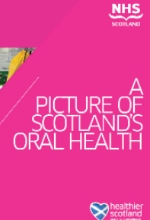
The Report compiles a comprehensive picture of the state of oral health and other issues relevant to dentistry in Scotland. Particular highlights include the record numbers of people (adults and children) currently registered with a NHS dentist in Scotland, and the substantial improvements that have been made in child oral health. The Report also considers some of the challenges for the future such as breaking the link between deprivation and poor dental health, oral cancer rates amongst adults and the oral health needs of vulnerable groups such as the elderly and homeless people. The Report reviews specific targeted programmes of intervention such as the Childsmile Programme, which has a particular focus on improving children’s oral health through a combination of health promotion and the early identification and management of oral disease.
On 1 April 2004, the Scottish Parliamentary Corporate Body, on behalf of the Health Committee, commissioned this survey of the population of Scottish dentists with the aim of: –
- Identifying their contribution to the provision of National Health Service dental services in Scotland.
- Identifying areas where the availability of such services is insufficient to meet the need or demand.
The report was produced by
Professor Tim Newton, Professor Alison Williams and Dr Elizabeth Bower . Department of Oral Health Services Research & Dental Public Health GKT Dental Institute, London.
Access document at Scottish Government archive







